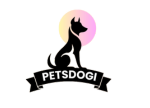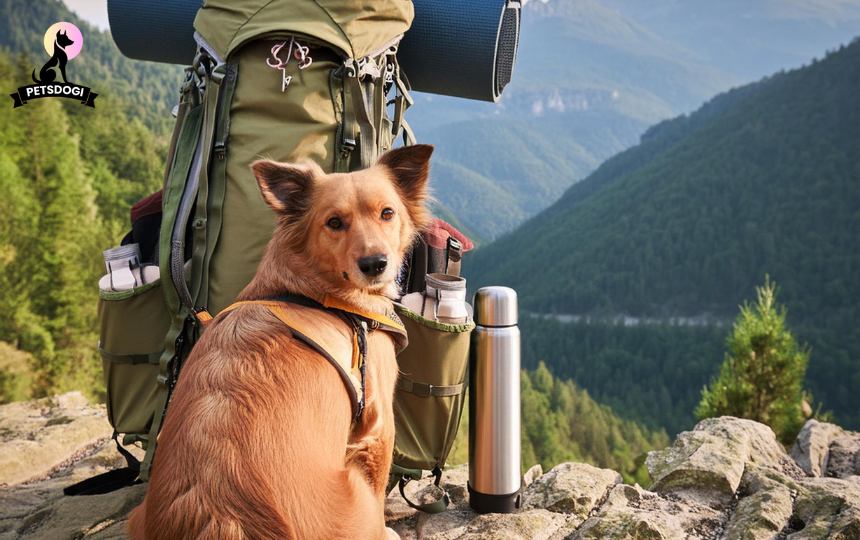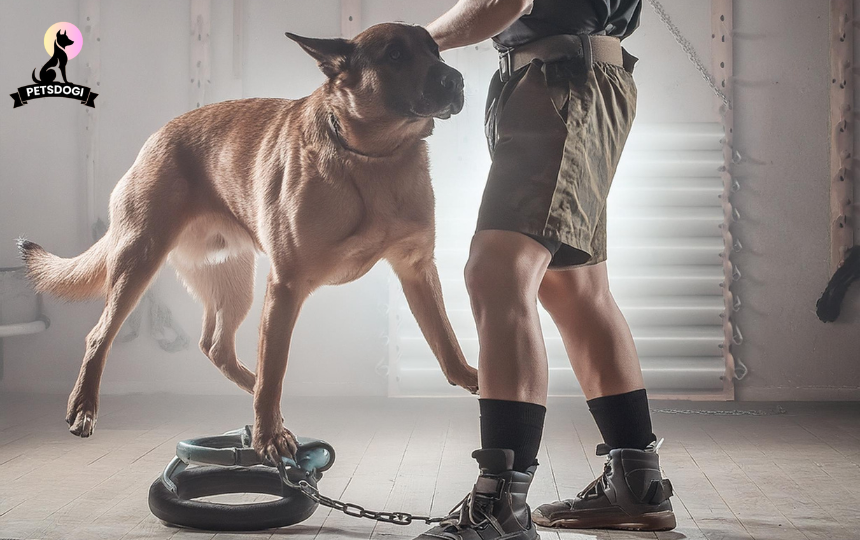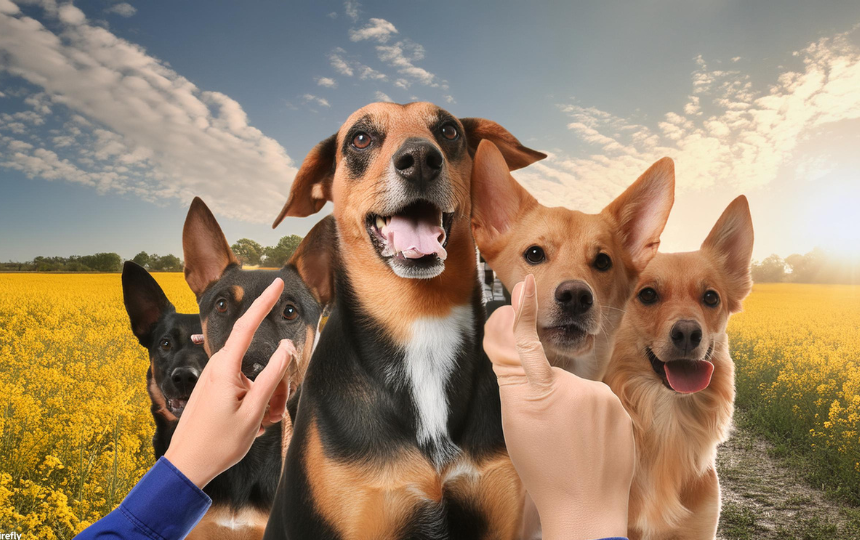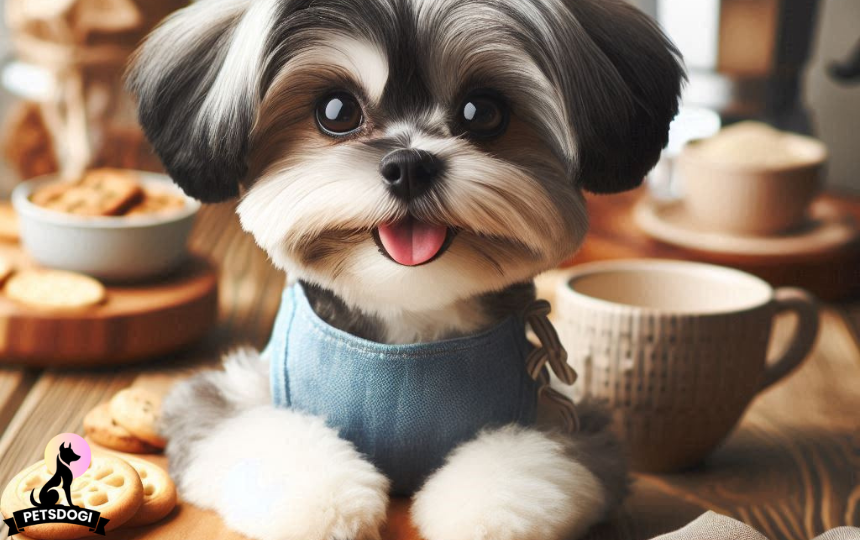What steps can I take to ensure my backyard is safe for my dog?: You must do more than merely add an outside space to your backyard to make it a secure haven for your pet; you must also ensure that your dog has all of the comforts and security he requires. If you follow the techniques and recommendations in this post, your yard can become a safe refuge for your pets.
We’ll cover everything you need to know to change your backyard into a place where your dog can thrive, from erecting a secure fence to selecting the correct plants to avoiding dangerous chemicals and creating engaging spaces. Now, let’s take a look at a few basic but effective ideas for improving your dog’s outside experience while allowing you to relax.
1. Establishing a Dog-Safe Haven
An Overview of a Dog-Friendly Safe Backyard:
A number of things need to be taken into account to make sure your dog feels comfortable and secure in your yard. An outline of the essential components required for a safe and pet-friendly environment is given in this section. We’ll go over the fundamentals that help create a worry-free outside environment for your pet, from the value of a safe fence to the relevance of gate safety inspections.
The Value of a Safe Barrier:
One essential component of a backyard that is dog-friendly is a fence. It serves as your pet’s physical border in addition to warding off possible threats. We’ll look at various fencing alternatives and provide advice on how to choose the best one for your dog depending on its size, breed, and individual needs.
Checks for gate safety:
For your dog, the gate is an essential point of entry and exit. It is vital to ensure its safety in order to stop any unintentional escapes or injuries. This section will go over the significance of routine gate safety inspections and offer helpful advice on upkeep and modifications to ensure your pet has a safe and secure enclosure.
Updating a Spotless Yard:
Maintaining a tidy yard adds a great deal to your dog’s happiness and health. We’ll talk about the value of routine yard care, such as trash management, grass cutting, and the removal of dangerous items. These easy methods not only make your yard seem better, but they also make your dog’s environment safer.
This section attempts to lay the foundations for building a dog-friendly refuge by highlighting the essential elements that create a safe, fun, and worry-free backyard for your dog.
2. Plants and Landscaping that Welcome Dogs
Selecting Plants Safe for Pets:
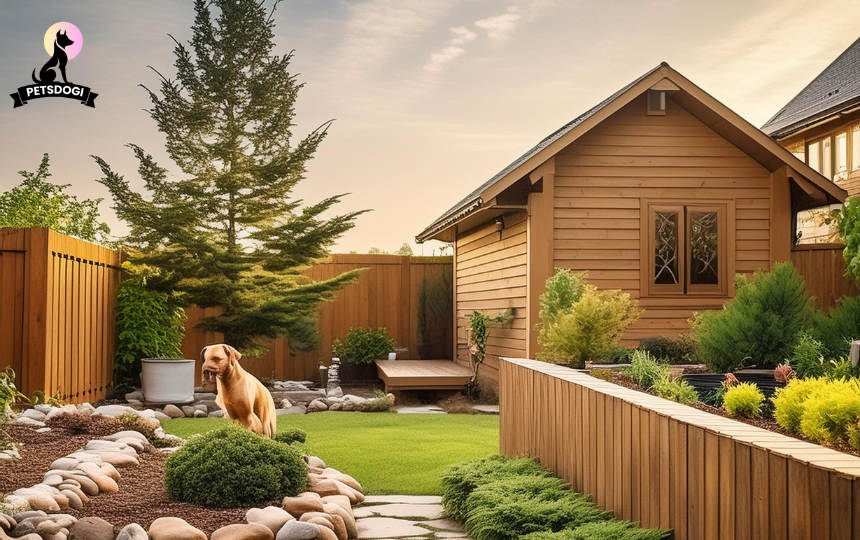
When designing a backyard that is dog-friendly, landscaping using plants that are safe for pets is essential. A thorough guide to choosing plants that won’t hurt your pet may be found in this section. We’ll feature a range of pet-friendly products, examining their visual appeal and making sure dogs may safely interact with them without risk.
Safe Lawn Practices and Organic Lawn Care:
It takes careful attention to maintain a beautiful grass, especially if you have a dog. We’ll go into the advantages of using organic lawn care products and discuss how they make your pet’s habitat safer and healthier. In order to create an outside area that is pet-friendly, this chapter will also address safe lawn practices, such as pest control and height of mows.
Handling Hazardous Species in Your Garden:
Toxic plants should be identified and removed from your yard in order to protect your dog’s health. We’ll provide you a thorough list of common plants that are toxic to dogs along with instructions on how to identify them and swap them out with safer ones. This proactive strategy contributes to your pet’s safe haven creation.
Recognizing the Advantages of Organic Lawn Care
The benefits of utilizing organic lawn care products for a dog-safe yard are covered in detail in this part. We’ll look at how using organic solutions makes an outdoor area more pet-friendly and sustainable, from lowering chemical exposure to fostering a healthier ecology. Knowing these advantages gives dog owners the power to decide what’s best for their dog’s health.
You may improve the general safety and enjoyment of your backyard by implementing dog-friendly landscaping techniques and choosing safe plants. This section offers practical advice to assist you in creating a safe and visually pleasing outdoor space for your dog.
3. Ensuring Safety from Harmful Chemicals
Steer Clear of Chemicals in Your Yard:
Chemicals like fertilizers and pesticides that are frequently found in yards might be harmful to your dog’s health. The significance of staying away from dangerous chemicals and choosing pet-safe substitutes is emphasized in this section. We’ll look at how to keep your outside space colorful and safe for your dog without using any chemicals.
Non-toxic Chemicals for Landscaping:
It is a possibility for pet owners looking for grass care or pest control solutions to use nontoxic landscaping chemicals. We’ll talk about substitutes that are secure for dogs and the environment, offering practical fixes for typical yard problems without jeopardizing the health of your animal companion.
Employing Secure Lawn Care Supplies:
It is possible to keep your grass healthy without using harsh chemicals. We’ll discuss safe lawn care methods and supplies that encourage a verdant, lush setting while reducing the risk of injury to your dog. Choosing pesticides, herbicides, and fertilizers that are especially made to be pet-friendly falls under this category.
Advantages of Allowing Grass to Grow Higher:
In addition to making for a lush, colorful lawn, letting the grass grow taller has advantages for your dog. We’ll look at how longer grass gives your pet a more comfortable and natural surface in this subsection. We’ll also talk about how brown patches from dog poop can be avoided with thicker grass, providing doable ideas for a dog-friendly yard.
A better and safer outdoor environment for dogs can be created by pet owners by prioritizing a chemical-free strategy and implementing safe lawn care techniques. This section offers practical advice on how to keep your yard colorful and safe for your pet at the same time.
4. Creating Designated Spaces for Dogs

Creating a Path That Is Dog-Friendly:
Making a walkway in your yard that is reserved for your dog can improve their experience and safety in general. This section will help you design a dog-friendly path by taking into account things like width, surface materials, and landscaping features. A well-planned trail ensures your dog’s enjoyment while keeping them safe by promoting exploration and offering a clear way.
Improving Your Yard for Dog Exercise:
This section is dedicated to making your yard a fun area for different dog activities. We’ll look at inexpensive upgrades that promote mental and physical stimulation, like play structures, interactive toys, and agility equipment. You may establish an atmosphere that supports your dog’s general wellbeing by include these components.
Creating Secure Play Areas:
When it comes to dog play areas, safety comes first. We’ll go over ways to keep play areas safe, select appropriate flooring, and reduce any potential risks. Whether your dog is playing in an open yard or a designated play area, putting safety precautions in place guarantees that they may do so without taking undue risks.
Dogs’ Sun-Proofing Areas:
It’s crucial to shield your dog from the sun, particularly in the summer. To keep your dog cool and comfy, this article offers advice on building shaded spaces, applying sunscreen that is safe for dogs, and adding water features. Making sure your yard has areas that are shaded from the sun improves your dog’s outside experience and protects against heat-related problems.
This section concentrates on the useful elements of creating areas in your yard that are tailored to your dog’s need. You may improve your dog’s outside experience in terms of safety and enjoyment by putting in place paths that are specifically allocated for play, sun-proof places, and other features.
5 A Pet-Friendly Yard Checklist
Providing Water and Shelter When Needed:
A pet-friendly yard must take your dog’s necessities into account. We’ll talk about how important it is to have water stations and necessary cover scattered throughout your yard. Ensuring your dog has access to basic amenities like water bowls positioned strategically or a comfortable doghouse will improve their comfort and overall well-being.
Managing Ticks and Fleas:
It’s important to prevent ticks and fleas from endangering your dog’s health. This chapter will discuss safe and pet-friendly solutions for managing these pests in your yard. These steps, which range from using natural repellents to routine grooming routines, assist in keeping your outside area free of fleas and ticks.
Successful Pet-Proofing Techniques:
The process of pet-proofing your yard entails locating and eliminating possible risks. We’ll provide you a list of common hazards, like poisonous plants, jagged objects, and confined areas where your dog could get trapped. Effective pet-proofing techniques can help you reduce hazards and provide your pet with a safe and secure environment.
Including Engaging and Interactive Components:
Providing your dog with opportunities for play and excitement is just as important as ensuring their safety when outdoors. Ideas for entertaining and engaging components, like agility courses, puzzle toys, and dedicated digging spaces, are provided in this section. The emotional and physical health of your dog is enhanced by these additions.
The key elements of a pet-friendly yard are outlined in this checklist, which includes proactive pest control and pet-proofing measures in addition to basic necessities like water and shelter. You can make sure that your yard provides your dog with happiness and enrichment in addition to safety by adding these components.
Conclusion
In summary, creating a secure and pet-friendly retreat in your backyard requires a careful balancing act between preemptive planning and realistic considerations. By emphasizing essential components like safe fencing, landscaping that is safe for pets, staying away from dangerous chemicals, and setting aside specific areas for your dog, you improve safety while also improving their general wellbeing.
Incorporating enjoyable and engaging aspects also helps to create an atmosphere that is joyful and stimulating in addition to meeting your dog’s bodily needs. With insights and practical advice, this article has served as a guide for pet owners on how to design a backyard that not only satisfies your dog’s basic needs but also enriches their outside experience.
